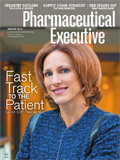Beyond the Blame Game: How Pharma is Learning to Collaborate
In a follow-up to our November CEO profile, Novo Nordisk’s Jesper Høiland writes how pharma companies and insurers are learning to collaborate.
Under the Affordable Care Act, the US made great strides in extending health coverage to millions of people who previously had none. Nevertheless, for many people who struggle with chronic illnesses, paying for medical care is a challenge.
Jesper Høiland. Photo courtesy of Novo Nordisk.

In recent months, the media has put a spotlight on these access issues, causing a wave of finger pointing among pharmaceutical companies and health insurers. The drug industry argues that high deductibles and co-pays discourage economically challenged individuals from filling prescriptions that could make them well. Insurers counter that the problem lies in the high cost of medications to treat chronic diseases.
Patients, physicians, and other healthcare stakeholders are getting tired of this blame game. Most people feel it is time for pharmaceutical companies and insurers to bury their differences and collaborate on behalf of patients.
I strongly agree. We must start to put more of our energies into building partnerships that can deliver high-quality care to the greatest number of people. Those results may take the form of disease awareness and education campaigns, patient assistance programs, or greater transparency on the cost and availability of healthcare products and services. Whatever the vehicle, we need to adopt a more collaborative spirit and mode of public discourse.
I understand that collaboration among opposing camps requires compromise and concessions. Why do I believe this is possible? Because the process has already begun.

Cities Changing Diabetes
One place where we have already seen results is in the area of community engagement. Pharmaceutical companies and payers have started working together on a variety of diabetes education programs, and in a growing number of cities, we collaborate to identify people at risk of diabetes so that we can protect them from the downward spiral to disease.
Our most ambitious initiative is called Cities Changing Diabetes, which we launched in the US in November in a partnership with the city of Houston. The goal is to analyze key factors driving the global epidemic in urban diabetes and use that knowledge to forge real-world solutions. To the extent that we succeed, there will be fewer patients to purchase our prescription drugs-and that is fine! We would consider it a necessary goal and symbol of our success.
Once our Cities partnership is in full gear, we hope to work closely with the Houston business community, including leading health insurers such as United Healthcare, Blue Cross Blue Shield, Aetna, and Cigna to tackle the issue of urban diabetes head on. For payers, public health programs like Cities Changing Diabetes won't be a framework for recruiting new plan members. As with our academic, governmental, and other partners, all of the payers' resources will be used to gather knowledge and execute strategies to fight the disease.
With some of these insurance partners, we have already tested the ground rules for collaboration in smaller local alliances. These have led to the promotion of healthy living habits, as well as new communication channels between our two industries. And don't overlook the golden irony: The insurers are working on behalf of individuals who may never sign up for their plans, while Novo Nordisk is helping ensure that swaths of the population never develop an illness that would require them to use our products.
Chicago Fire
The first program designed with these ideals in mind was launched in Chicago in 2011. It was a sponsorship program for the Chicago Fire Soccer Club, conceived from the get-go as a partnership involving Novo Nordisk, Blue Cross and Blue Shield of Illinois, and the American Diabetes Association. Now in our fourth year, we operate out of shared booths at popular pre-game street fairs known as FireFests.
At the booths, we distribute literature on diabetes prevention and awareness and we have health experts on hand to talk with visitors. Blue Cross and Novo Nordisk also co-sponsor Chicago Fire soccer practices where fans can mingle with players. Last year, we kicked off a similar program with Independence Blue Cross (IBC) in Philadelphia, and we're developing initiatives in other cities.
In indirect ways, these community programs burnish the brands for corporate sponsors. But the greatest reward comes when sports fans start to connect some important dots in their own lives. The fans feel inspired by the athletic feats and the glow of good health on the playing field. Our message is simple: Take that inspiration and convert it to a lifetime stance against illness.
From transaction to partnership
There are other, more business-focused areas where Novo Nordisk is trying to change its perspective toward payers. For example, we began shifting resources internally so that we could work as partners with health insurers and pharmacy benefit managers to solve patients' problems.
In the past, for each of these key accounts, Novo Nordisk assigned just one staff member to handle all of the insurer's questions or requests. Now, the same insurer can draw on a dedicated team, whether they're helping patients achieve treatment goals or setting up a medication adherence program.
Transparency
Collaborations among payers and pharma companies will ultimately necessitate deeper levels of compromise. Let's take just one area of disagreement between the two camps: issues of transparency. It's not hard to visualize the kinds of concessions pharma and payers may one day put on the negotiating table.
For pharma's part, we could provide a more edifying view of how innovation, research and development, and marketing and administrative costs are reflected in the prices of certain drugs. Our industry has tried to explain that the next generation of life-saving medicines is paid for out of current profits. I think payers, policymakers, physicians, and patient advocates get it. But they have asked for greater clarity, and we shouldn't be so quick to dismiss the request.
What could the insurers do better? For one thing, the exchange websites they've created could be more helpful to patients and also benefit their budding partnerships with pharmaceutical companies. I'd like to see these sites include out-of-pocket calculators, formulary search tools, and other enhancements to simplify the consumer's experience. The sites could also feature links to necessary documents such as benefit and coverage summaries, updated formularies and provider directories, and information on financial assistance.
Some of these compromises may take time. But the joint efforts pharmaceutical companies and payers are making with Cities Changing Diabetes and other urban initiatives set an important precedent. Together, we're breaking down barriers that have kept payers and pharma at odds for too long-barriers that owe their existence to competing incentives and business models.
Both sides now understand that patients never benefitted from the rifts that divide us. As we raise the ante in this game-forging compromises, and gradually taking on some of the transparency issues I just described-it's good to remember that the ground is broken and the foundations are laid.
Jesper Høiland. Photo courtesy of Novo Nordisk.

is President of Novo Nordisk Inc.

Cell and Gene Therapy Check-in 2024
January 18th 2024Fran Gregory, VP of Emerging Therapies, Cardinal Health discusses her career, how both CAR-T therapies and personalization have been gaining momentum and what kind of progress we expect to see from them, some of the biggest hurdles facing their section of the industry, the importance of patient advocacy and so much more.
Applying Porter’s Five Forces to Portfolio Management in Pharmaceutical R&D: A Strategic Roadmap
March 17th 2025The increasing costs and complexity of R&D in the pharmaceutical industry have necessitated the adoption of strategic portfolio management to optimize resource allocation and enhance competitive advantage.